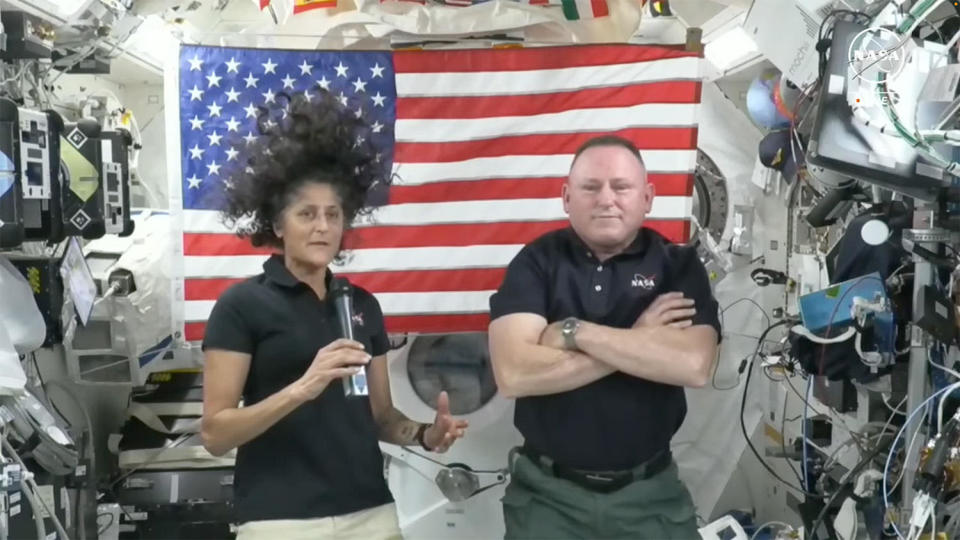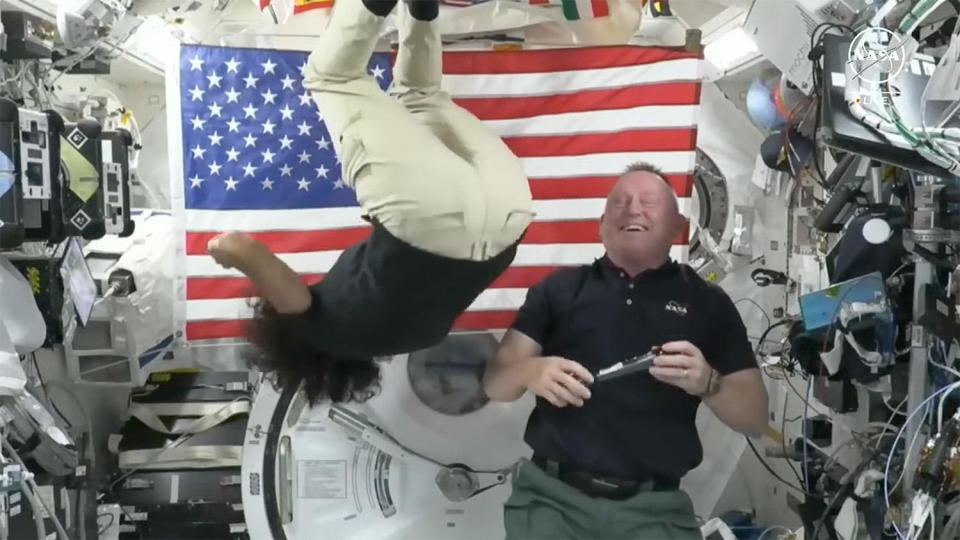The crew of Boeing’s Starliner spacecraft said Wednesday they are confident the capsule will return them safely to Earth at the end of their extended stay aboard the International Space Station, despite helium leaks in the ship’s propulsion system and problems with maneuvering the thrusters.
Launched on June 5, Commander Barry “Butch” Wilmore and co-pilot Sunita Williams The ship was originally expected to stay in space for about eight days, where it would put the Starliner through its paces during its first crewed test flight.
But the helium leaks and problems with the booster have prompted NASA to extend their stay aboard the space station indefinitely. Wednesday marked their 35th day in space. In the meantime, engineers are conducting tests and analyses to better understand what caused the problems and ensure the spacecraft can bring Wilmore and Williams home safely.

In the meantime, NASA continues to insist the crew is not “stranded” in space, and both Wilmore and Williams, speaking to reporters for the first time since the launch, appeared to agree with that assessment.
“I think given the current state of affairs, the knowledge we have now and the way the spacecraft flew when it docked, we feel confident that if the need arises or if there is a problem with the International Space Station, we can get in our spacecraft, undock, talk to our team and figure out how best to get back home,” Williams said.
“I have a very good feeling in my heart that this spaceship will bring us home, no problem,” she added. “We are learning now how to optimize our specific situation and make sure we know everything about it.”
When asked about his confidence in the Starliner, Wilmore replied, “We’re very confident.”
“We’re currently testing thrust at White Sands, New Mexico, to try to replicate (the problems) that we saw when we met,” he said. “And we’re going to learn from that. And we’re going to implement new processes and procedures that we’ll use as needed.”
But just to be on the safe side, Steve Stich, manager of NASA’s Commercial Crew Program, said the team has “dusted off” plans originally developed when the Russian Soyuz spacecraft carrying NASA astronaut Frank Rubio to the space station developed a coolant leak.
In that case, preliminary plans were made to possibly bring Rubio down in a SpaceX Crew Dragon capsule if there was absolutely no other option. Ultimately, the Russians launched a replacement Soyuz and those plans were not needed.
“In that case, we decided to use Dragon as an emergency return option for Frank … to use it as a lifeboat,” Stich said. “We had a configuration of Frank in the mid-deck of Dragon. I mean, we certainly dusted off some of those things to look at versus Starliner, just to be prepared.
“But again, our best option is to send Butch back to Suni on Starliner. … We’re pretty far from where we were with Soyuz. We just want to understand the thrusters a little bit better before we commit to the final undocking and reentry.”
“A great time” in space after multiple delays
Williams, meanwhile, said she and Wilmore enjoyed the extra time in space.
“We’re really enjoying ourselves here on the ISS,” she said. “You know, Butch and I have been here before, and it feels like… coming home. It feels good to be floating around. It feels good to be in space and working with the team here on the International Space Station.


“So yeah, it’s great to be here,” she said. “So I’m not complaining, Butch’s not complaining that we’re here a couple extra weeks.”
Four years behind schedule, Starliner launched on June 5, a month later than planned, due to minor problems with the crew’s Atlas 5 booster, issues with a countdown computer and a small helium leak in the capsule’s aft service module. Helium is used to pressurize Starliner’s propulsion system so fighter jets can fire if needed.
After extensive analysis, NASA and Boeing managers decided the leak did not pose a safety threat and the Starliner was allowed to launch in its entirety.
Once in orbit and en route to the space station, however, four more helium leaks occurred. In addition, the Starliner’s flight computer disabled several rear-facing maneuvering jets when telemetry did not match preset operational parameters.
One thruster was deemed unusable for the future, but the others were later successfully tested. That “hot-fire” test gave engineers confidence that the jets needed for post-undock maneuvers and to keep Starliner stable during the critical de-orbit rocket firing would perform as needed to prepare the ship for re-entry.
The thrusters in question were pointed at the sun during long stretches of the Starliner’s approach to the station, and engineers suspect the problems experienced earlier were related to high temperatures and the rate of firing during the final approach. They are attempting to duplicate those conditions in ground tests.
As for the helium leaks, the propulsion system is not being used while docked to the space station. The system was pressurized for the hot-fire test, but otherwise the valves are closed as always planned to isolate the helium tanks, preventing additional leaks.
The system will be re-pressurized before undocking to perform the maneuvers needed to get home. But engineers have said there is 10 times more helium in the tanks than is needed for the return trip, which provides a comfortable margin even if one of the known leaks gets worse.
“I anticipate that we’ll still be doing tests prior to undocking, first opening the helium valves and then secondly, once we undock, to make sure everything is operating correctly, as planned, based on what they found out during the thruster test,” Williams said. “So I’m confident, Butch is confident.”
All of the hardware in question is housed in the Starliner’s service module, which is jettisoned just prior to atmospheric entry. As such, engineers will never be able to examine the equipment with their own eyes. Williams said it only made sense to extend the mission to get as much testing done as possible before heading home.
“If we just went home, we would lose the SM (service module) and then we wouldn’t be able to do all those tests and have any visibility into our spacecraft,” she said.
Stich did not say when the crew would be cleared to undock. The next Crew Dragon crew rotation flight is scheduled for launch in mid-August and “a couple of days before that launch opportunity, we should be able to get Butch and Suni home on Starliner.”
“So that’s kind of the back end,” he said. “We’re really working on following the data and seeing when the earliest we can target is to undock and land. I think some of the data suggests, optimistically maybe, that it’s late July. But we’re just following the data (and) determining when the right undocking opportunity is.”
Video shows two planes nearly collide
Sneak Peek: Unmasking the Zombie Hunter
Sneak Peek: Murder by Clown